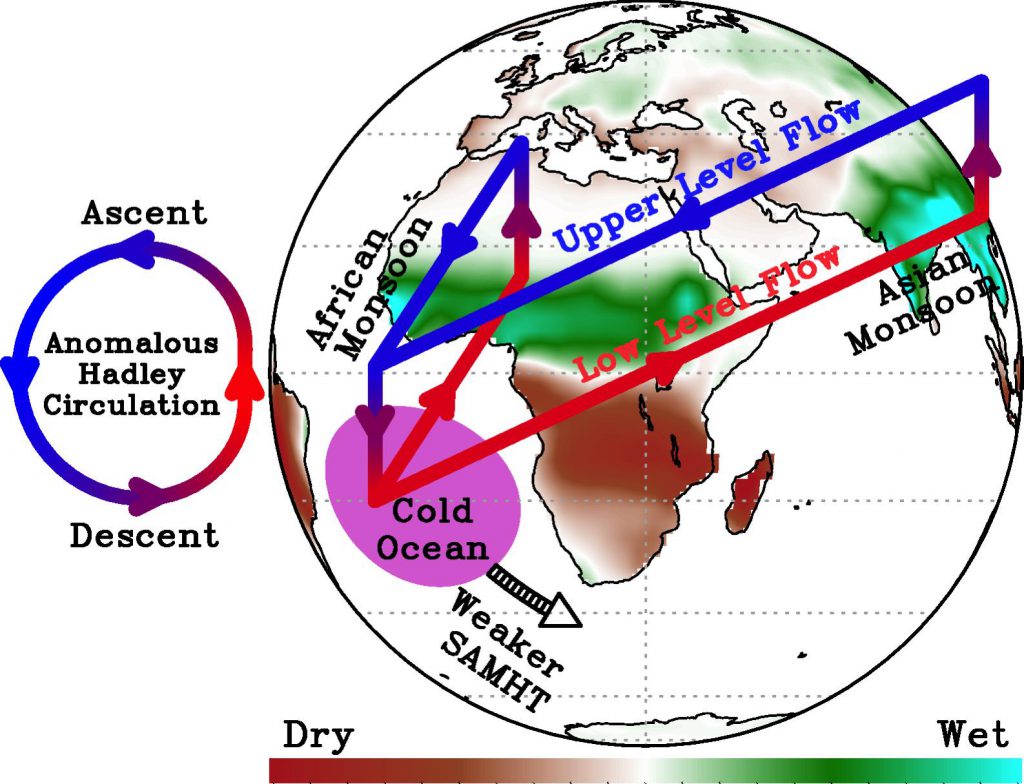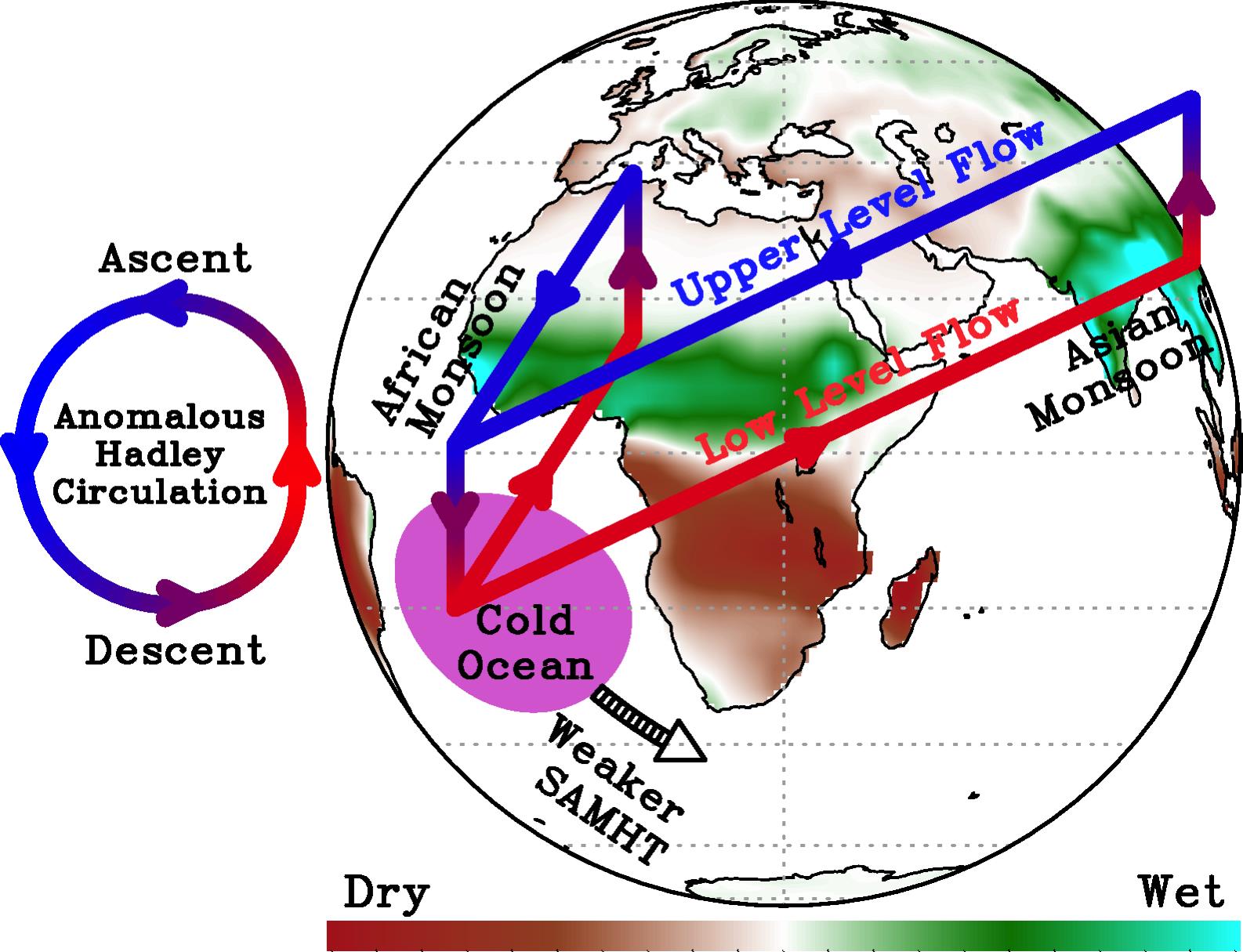There have been many efforts to understand the role of the Atlantic Meridional Overturning Circulation (AMOC) as a potential predictor of decadal climate variability, motivated partly by its inherent relationship with North Atlantic sea surface temperature. In contrast, there is currently limited knowledge about the underlying mechanisms that govern the South Atlantic Meridional Overturning Circulation (SAMOC) variability and how it might feedback into climate, partly due to the small number of direct observations in this ocean basin.
Therefore, the majority of efforts to understand the dynamics of the AMOC and its climate impacts are focused on the North Atlantic. Nevertheless, the South Atlantic Ocean plays a key role in the global distribution of energy and is characterized by complex and unique ocean dynamic processes. For example, the Brazil-Malvinas Confluence and the Agulhas leakage play critical roles in the exchange of water masses. These potentially modify the long-term response of the SAMOC that could impact global atmospheric circulation, precipitation, and climate. For example, it is hypothesized that decadal variations of SAMOC could modulate the strength of global monsoons with 15 – 20 years of lead-time, suggesting that SAMOC is a potential predictor of global monsoon variability. We will present quantitative analysis that supports the above hypothesis.


